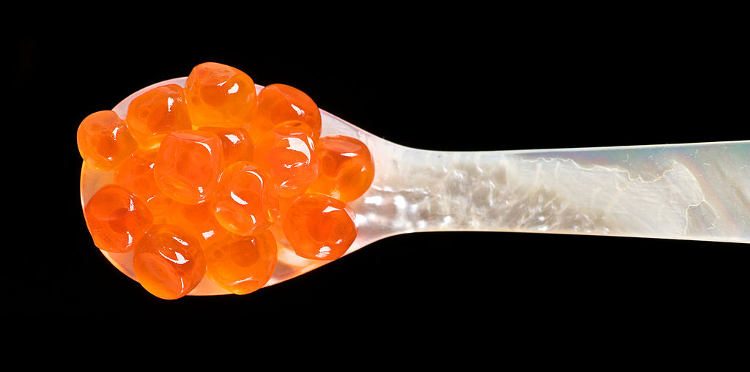
Caviar consists of salt-cured fish eggs. Usually, these eggs come from four types of sturgeon including the Beluga, Ossetra, Sterlet, and Sevruga. So, what does caviar taste like?
Caviar is expensive but worth the price unless you fail to choose the right one. Choosing the right caviar is based on individual preference. You should select caviar depending on your preferred taste.
What Does Caviar Taste Like?
Caviar is considered a delicacy and enjoyed by many before Champagne, truffles, and raw oysters came into existence. Lighter, older, and larger caviar are the most expensive ones.
Those who’ve never had caviar may think that it tastes like fish eggs. However, although they are fish eggs, they do not taste very fishy. If you find that the taste of the caviar is overly salty or excessively fishy, you might be eating a low-quality or stale product.
Caviar should taste mildly fishy and slightly salty. Caviar tastes more like ocean water, while some say it tastes like salmon.
You can judge the quality of caviar by the color and size of the eggs. Large and mature eggs are firm, have an intense flavor, and a vibrant color.
Caviar should be very fresh and not stored in fluctuating temperatures. As you bite into caviar, the eggs should pop with a rich nutty and buttery flavor. It has a chewy and slightly mushy texture that rolls over your tongue.
Caviar sourced from white sturgeon has a mild fishy taste compared other caviar. Caviar obtained from Hackleback is oily, while Sevruga and Ossetra caviar tastes buttery. The ones packaged in metal containers will taste different.
Some of the factors that determine caviar taste include:
- Quality of water the fish lives in
- Type of food the fish eats
- Age of the fish
- Species of the fish
- Handling and storage process
How To Eat Caviar
Before you eat caviar, you should know how to serve it. Stainless steel plates and forks may cause the caviar to taste bitter. Caviar should be served in glass, plastic, or ceramic container.
Caviar must be served chilled. Serving it at room temperature may give you the proper caviar taste. You could even serve in a dish of ice to keep it at a lower temperature.
To enjoy the taste of caviar, you should eat it in small bites (smaller than a tablespoon). Doing this will help you appreciate both the flavor and texture. Most people usually eat caviar with unsalted crackers. In Russia, it is often served over small, traditional pancakes called blini.
Proper garnishing will accentuate the caviar taste. Opt for traditional garnishes such as fresh herbs like dill or parsley, chopped onions, sour cream, or chopped, hard-boiled eggs.
Caviar is sold in small containers which are meant to be finished in one serving. Do not save caviar after opening the container. If you eat the leftover caviar later, you will notice a change in the taste. Caviar will spoil after opening.
Before serving or eating caviar, you should be aware that it considered an appetizer to accompany a larger meal. It should be eaten as an appetizer and not as the main course. Eating it in larger quantities may leave you with a bad tasting experience.
Delicious Caviar Recipes
Black Caviar Sandwich Recipe
Ingredients:
- 1 teaspoon of black caviar
- 2 teaspoons of butter
- 2 slices of french baguette
- Lemon
- Salt
Directions
Beat the butter with lemon juice and salt.
With the help of a round cookie cutter, cut small circles out of the bread slices.
Spread the butter mixture on the top of slices.
Finish it by spreading black caviar on top.
Canapé with Black Caviar and Salmon Recipe
Ingredients:
- 6 thin slices of white wheat bread
- 50 grams of butter
- 125 grams of black caviar
- 225 grams of sliced smoked salmon
Directions
Toast the bread slices until golden and spread some butter on them. Put black caviar on one half of the bread and salmon on the other.
Cut the sandwich into any desired shape and serve.
Sources:
“How to Eat Caviar,” wikiHow; http://www.wikihow.com/Eat-Caviar, last accessed April 21, 2017













